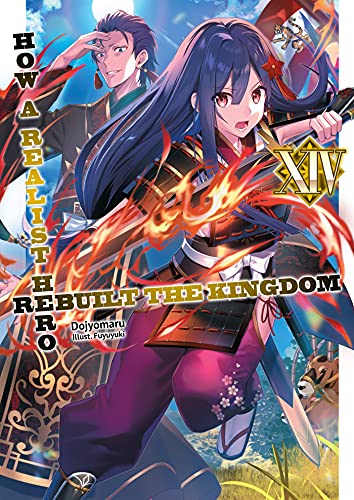By Dojyomaru and Fuyuyuki. Released in Japan as “Genjitsu Shugi Yuusha no Oukoku Saikenki” by Overlap Bunko. Released in North America by J-Novel Club. Translated by Sean McCann.
This feels like a volume we’ve been waiting for a long time. Fuuga is still in it, but for once he is not the entire focus of the series. Souma gets to play a large, active role. We even get to see the Empire again, and get a sense that Maria is unhappy but very good at hiding it. All of this leads up to one of the better volumes in some time, even as it takes on an issue that the author was a bit wary of doing when they were writing the webnovel. Yes, it’s a pandemic, though this is not a viral infection like COVID-19 and is more parasite oriented. And of course there’s the revelations we get about Souma’s summoning, which feels like it’s been a long time coming. It makes a lot of sense given what we’ve known about this world, and also explains why some of Souma’s reforms have gone so smoothly. Oh yes, and in case you were worried, MORE BABIES!
The story starts with us getting a look at one of the few nations we haven’t dwelt on yet, the Spirit Kingdom of Garland. They have not made a good impression in the series so far, being high-elf supremacists and also driving out their reformer Merula. That said, they have a more pressing problem: the demons have overtaken one of their two islands, and they want Souma’s help to get it back. Unfortunately, the negotiations go badly. They go badly with Maria as well. Fortunately… or not… Fuuga can see an opportunity to conquer more lands, and agrees, planning to overthrow the current kingdom and install a puppet state (something that gets a big boost when the royal princess of the Spirit Kingdom falls head over heels for one of Fuuga’s aides). Unfortunately… there’s a sickness going around the spirit kingdom.
Realist Hero has never been known for its subtlety, and this book in particular is a bit on the nose with its insistence that all countries must put aside differences and unite when there is a pandemic that could kill us all. Fortunately, unlike Machiavelli’s teachings (which do come up here a lot as well, no fear), I am 100% behind this. I also appreciated Souma lecturing on the danger of making ideas too simple and that it might lead to people accepting conspiracy theories. (*cough*) That said, my favorite part of the book was the big summit which unites the three main powers in the world. This gives Maria a chance to talk with Liscia, and drop several unsubtle hints that Liscia nevertheless completely fails to pick up on. “Gosh, I wish someone else was ruling the Empire! Oh hey, Souma even has rulers from other countries as his wives! Nudge, nudge, wink, wink.” I don’t think Souma is going to take over the Empire anytime soon, but I also don’t think it will be long before Maria becomes part of the polycule, somehow.
By now everyone knows the kind of series Realist Hero is, and those who don’t are certainly arguing about it on anime forums, as the second season is currently running. But for novel readers, this should give you a lot of what you want.



